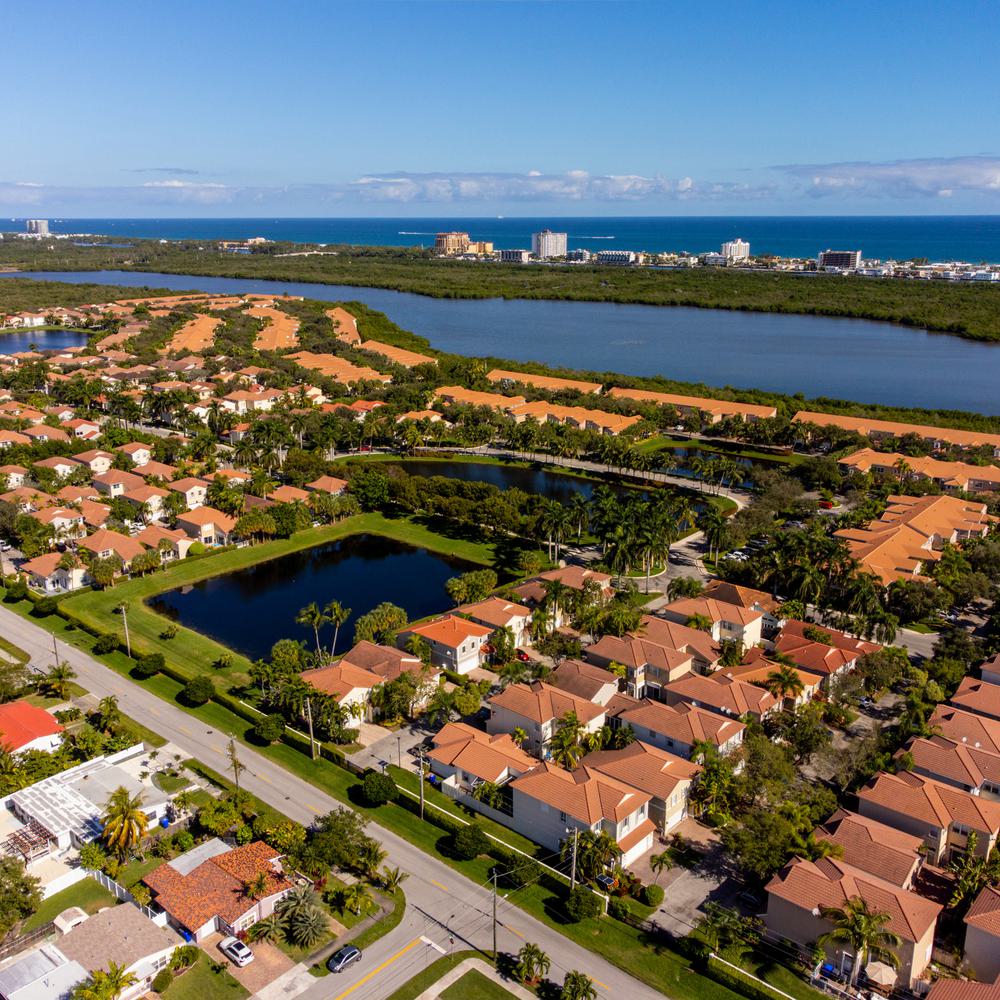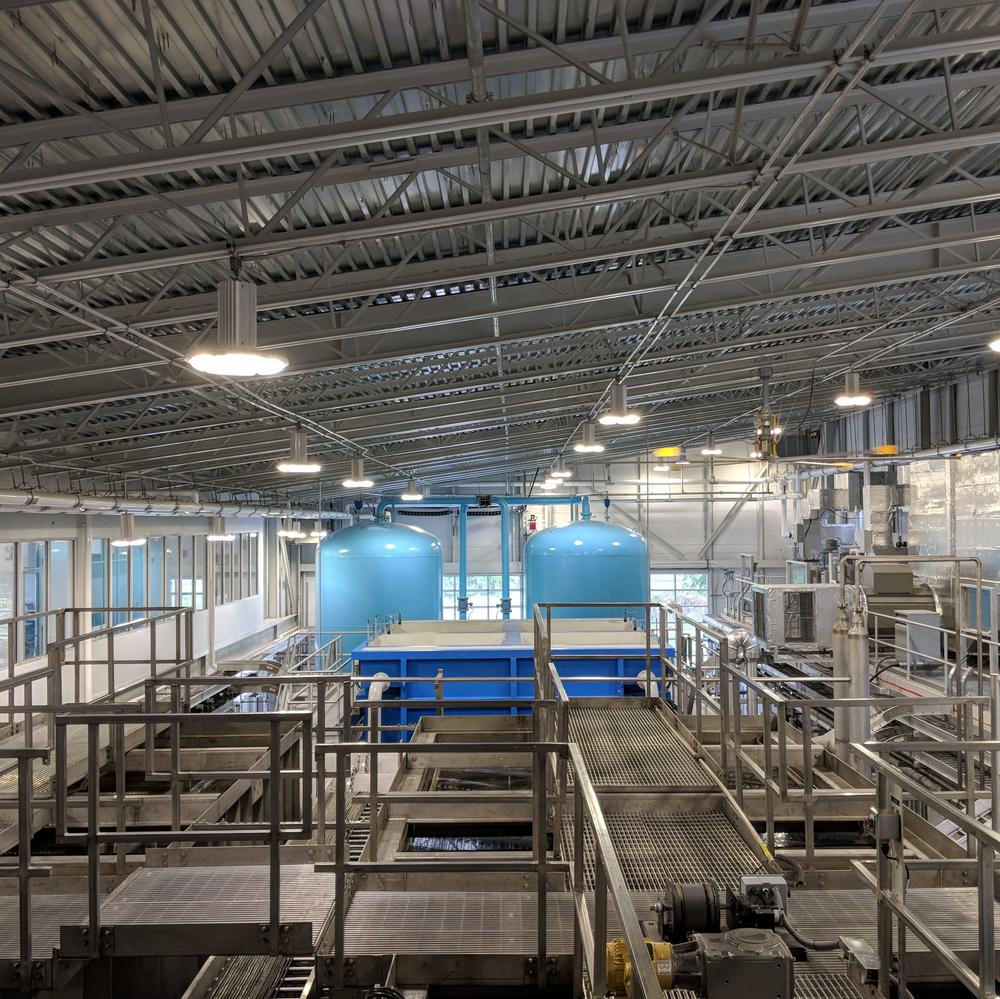LA's New River
LA’s bold step toward recycling all its wastewater begins at the Donald C. Tillman Water Reclamation Plant.
The history of Los Angeles is written in water. To grow from a small pueblo into a metropolis of four million people, LA has tapped faraway rivers with the help of hundreds of miles of aqueducts. They’re a testament to the City’s resourcefulness and innovation—qualities it now needs to face the challenges and uncertainties brought on by climate change.
To start addressing those challenges, the Los Angeles Department of Water and Power (LADWP) has its sights set on a new river that’s been quietly flowing beneath the city for decades largely untapped: wastewater. Every day, the City of LA releases roughly 275 million gallons of treated wastewater into rivers, streams, and the ocean.
“The idea that Southern California can import water from far away, use it one time, and dump much of it into the ocean just doesn’t make sense for the future,” said David Pettijohn, Director of Water Resources for LADWP. “That’s why the City of LA wants to recycle 100 percent of the water it uses.”
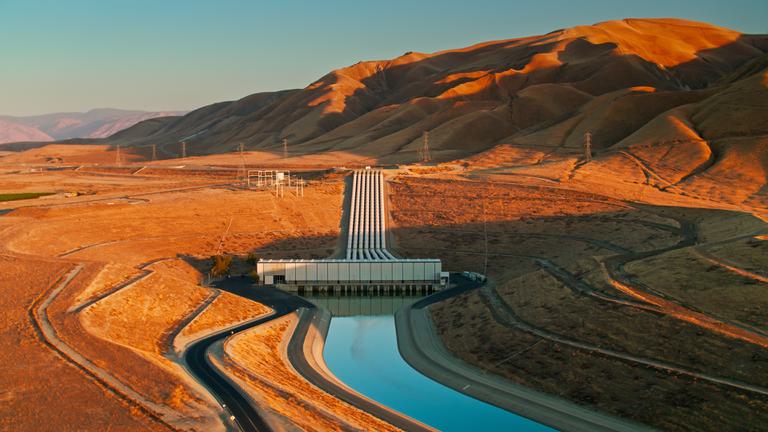

Portions of the California Aqueduct (left) and Los Angeles Aqueduct (right).
With help from Hazen, LADWP is partnering with another city agency, Los Angeles Sanitation and Environment (LASAN), to take a big step towards this goal with the Los Angeles Groundwater Replenishment Project (LAGWR). The initiative will transform the Donald C. Tillman Water Reclamation Plant (Tillman) in Van Nuys into a facility capable of turning wastewater into purified recycled water: water that’s clean enough to replenish underground aquifers that supply a portion of LA’s drinking water.
Scheduled to start construction by December 2024, the LAGWR facility will be online by 2027. At a cost of $740 million, the LAGWR is one of the largest recycled water projects in California, and it will produce 20 million gallons per day of purified recycled water—enough for 250,000 people. This new supply will be critical for recharging the nearby San Fernando Groundwater Basin.
"This project is monumental—it's one of the largest groundwater replenishment projects in California," said Pettijohn. "It creates a new sustainable, local water supply."
Buying local
The City of LA imports 90% of its drinking water supply. As climate change makes droughts more severe, this reliance on imported water has grown riskier.

“There are some years now when because of
climate change we don’t have enough water
for our customers—that happened in 2022,”
said Anselmo Collins, Senior Assistant
General Manager of the Water System
at LADWP. “We want more local water
supply to make our system more resilient
and more reliable.”
Delivery of imported water supplies can also be disrupted by disasters such as earthquakes or wildfires, which can damage aqueducts or pumping facilities.
Tillman’s new Advanced Water Purification Facility will help reduce the amount of imported drinking water that the City of LA purchases. The facility’s water recycling process is known in the industry as advanced treatment, which treats wastewater to the state’s indirect potable reuse standards, sends it underground for storage, and then finally draws on that supply to provide drinking water (after a final round of treatment, in Tillman's case).
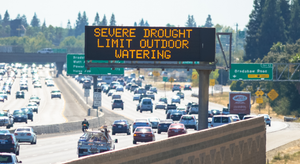
Restrictions on water usage were implemented during the 2022 drought in California.

This process requires intense cooperation and collaboration between LADWP, which is responsible for LA’s drinking water, and LASAN, which operates wastewater treatment facilities including Tillman.
The project is an opportunity to develop and strengthen the partnership between LADWP and LASAN ahead of even larger water recycling projects such as Pure Water Los Angeles, a reuse initiative that will include a multi-billion-dollar update to the Hyperion Water Reclamation Plant. LADWP and LASAN are developing a master plan for the program that’s expected to be complete by the end of 2024. It will provide a viable roadmap for implementation of this multi-decade initiative.
A long time coming
The groundwater recharge project at Tillman is the City’s largest indirect potable reuse project to date, and it wasn’t an easy road. In the early 1990s, a similar plan was halted after opponents hit on the phrase “toilet to tap,” stoking public anxiety about drinking water that had passed through a sewer pipe.
But since then, public perception has shifted due to increasing awareness of climate change, water scarcity, and the success of other similar projects, said Collins. Other utilities in California have already successfully launched indirect potable reuse systems, offering proof that the treatment processes are safe and reliable.

Hyperion Water Reclamation Plant. Credit: City of Los Angeles.

Recognizing this idea’s time had finally come, LA Mayor Eric Garcetti announced in 2019 that the City would recycle all its wastewater by 2035. In 2023, the contract for the Advanced Water Purification Facility at Tillman was approved and LADWP sought out an owner's agent—an advisory role—with the expertise to assist with three key areas of the project: wastewater treatment for indirect potable reuse, permitting, and groundwater modeling. Hazen joined the project as LADWP’s owner’s agent.

Closing the loop
Tillman’s new Advanced Water Purification Facility will incorporate multiple steps to polish up water that has already gone through several layers of treatment, including membrane filtration, reverse osmosis, and ultraviolet advanced oxidation. These treatments remove particles, bacteria, viruses, chemicals, and pharmaceuticals from the water so thoroughly that some minerals must be added back in.
“This sequence of treatment processes is proven and dependable,” said Hazen Senior Associate Nathan Boyle, who leads the firm’s water reuse practice for the Western region and served as task manager for the project.
Tillman’s purified water will travel through existing pipes to replenish the San Fernando Groundwater Basin. Initially, this replenishment will occur via the Hansen Spreading Grounds—areas of bare soil that allow water to percolate into the aquifer. Eventually, the plan is for some of the water purified by Tillman to be injected directly underground.
The water will remain underground for several years before being pumped back up for use. After being extracted using existing groundwater wells, the water will undergo standard drinking water treatment before entering LA’s potable water infrastructure.
Challenges and successes
Pipes already linking Tillman with the San Fernando groundwater basin presented an opportunity for replenishing an important aquifer, but the San Fernando basin also came with its own challenges due to industrial contamination that occurred in the 1950s and 1960s. Hazen has been working with LADWP in the San Fernando Basin since 2015 to model where these contaminants are and remove them by pumping and treating the most contaminated waters.
Hazen’s familiarity with the basin and its contaminants provided LADWP with assurance that replenishing the basin with recycled water could enhance its remediation efforts while maintaining a high degree of safety.
“The idea is to be strategic about where we put water back into the basin so that we don’t spread the contaminants,” said Lynn Grijalva, a vice president with Hazen and Sawyer and the project manager for the Tillman update.
Hazen’s knowledge of the San Fernando Basin was also crucial for the permitting process. The team took the approach of engaging with regulators at the very beginning of the project, starting with groundwater modeling, according to Hazen Associate Katie Vanyo, who led the permitting efforts.
“We know this groundwater basin and having that confidence in the modeling results was a critical piece for regulators,” said Vanyo.
Early and continuous engagement with regulators allowed Hazen and LADWP to iron out potentially thorny issues long before application materials were submitted. “These early conversations allowed regulators to digest the project over a longer time span and focus just on new elements as they emerged,” said Vanyo.
Open communication also fostered teamwork between LADWP and LASAN.
“Being on the same page at the beginning was a challenge. We are different agencies with different governances and different roles,” said Collins. “We are now all on the same page and it’s a source of pride that we can work together and deliver something beneficial for the City and beyond.”
A beacon for water recycling
For Collins, Tillman is about providing Angelenos with a resilient, reliable, and sustainable source of water, but it’s also more than that. “Any water recycling project we build allows us to rely less on imported water,” said Collins. “That’s not just beneficial for LA but also for the whole state and the Southwestern U.S. because it means we’re drawing less heavily from the San Francisco Bay’s delta or the Colorado River.”
The project’s broader regional impact is also recognized at the national level, as evidenced by a recent $30 million grant from the U.S. Bureau of Reclamation.
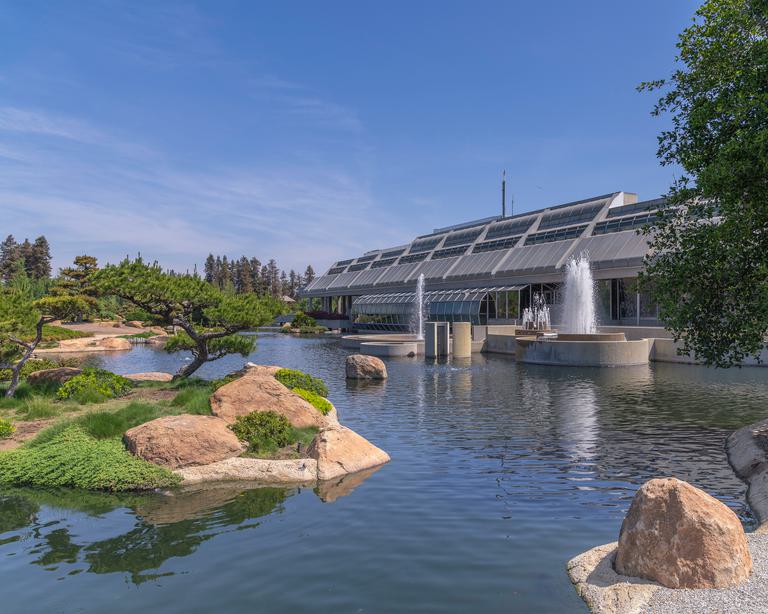
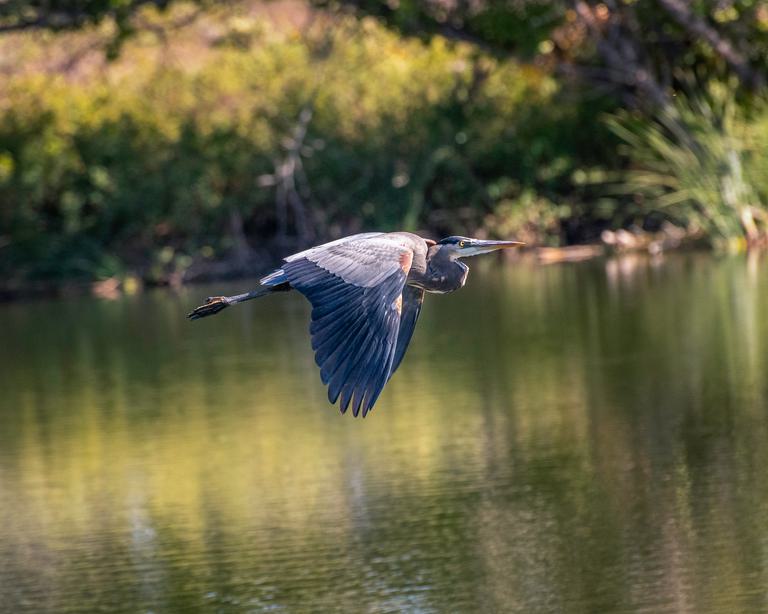
The Japanese Garden at Donald C. Tillman Water Treatment Plant; a great blue heron at the neighboring Sepulveda Basin Wildlife Reserve.
In the era of climate change, the need for projects like Tillman that allow cities to make their water usage more efficient and sustainable is only expected to grow.
Grijalva said she hopes that Tillman shows other cities that water recycling makes sense and that its treatment processes are proven, tested, and reliable.
Pettijohn said support for water reuse projects at the local, state, and federal level can also offset the upfront costs. LADWP was able to fund about half the cost of Tillman with local, state, and federal money.
But adequate funding can’t guarantee a project’s success. Collins said that engaging early and often with regulators as well as the community is vital to making it across the finish line. “Water is personal because you put it in your body,” he said. “Educating the public is important because the folks you’re giving water to need to be confident it's pure and clean.”
When Tillman begins sending water into the San Fernando Basin in 2027, LA will be well on its way to reaching its goal of recycling all the city’s wastewater. When paired with the even more ambitious Pure Water Los Angeles reuse project, LA will serve as a blueprint for urban water sustainability in an increasingly water-stressed world.














